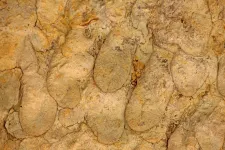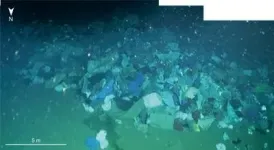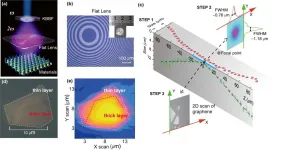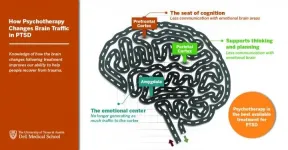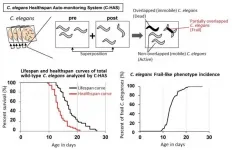INFORMATION:
* - Isem (CNRS/Université de Montpellier/IRD). Researchers from the Archéozoologie, archéobotanique : sociétés, pratiques et environnements laboratory (CNRS/MNHN), the Archéologies et sciences de l'Antiquité laboratory (CNRS/Université Paris 1 Panthéon-Sorbonne/Université Paris Nanterre/Ministère de la Culture), the Archéologie et histoire en Méditerranée et en Europe laboratory (CNRS/Université de Strasbourg/Université de Haute Alsace), the mélioration génétique et adaptations des plantes méditerranéennes et tropicales laboratory (Université de Montpellier/CIRAD/Inrae/Montpellier SupAgro) and Inrap; with the support of the ANR.
** - The archaeological vine pips have a "wild" morphology, as opposed to those of domesticated vines whose characteristics have been modified by human selection.
*** - The Little Ice Age mainly affected the North Atlantic and extended from the beginning of the 14th to the end of the 19th century.
History of the Champagne vineyards revealed
2021-01-27
(Press-News.org) Although the reputation of Champagne is well established, the history of Champagne wines and vineyards is poorly documented. However, a research team led by scientists from the CNRS and the Université de Montpellier at the Institut des sciences de l'évolution de Montpellier* has just lifted the veil on this history by analysing the archaeological grape seeds from excavations carried out in Troyes and Reims. Dated to between the 1st and 15th centuries AD, the seeds shed light on the evolution of Champagne wine growing, prior to the invention of the famous Champagne, for the first time. According to the researchers, "wild"** vines were cultivated throughout the period studied. Domestic varieties, coming from the south of Gaul, appeared as early as the 1st century and became the major grape varieties of the 2nd and 3rd centuries. This archaeological series was uninterrupted until around 1000 AD, when the wild vine and the southern varieties made a strong comeback. This period corresponds both to intense economic and societal changes and to global warming spanning a few hundred years. Northern grape varieties, more adapted to the cold, appeared more than 300 years later at the beginning of a colder climatic period***, supplanting the southern grape varieties. Published in Scientific Reports on January 27, 2021, these results pave the way for further global analysis that will allow a better understanding of the history of viticulture by combining biological, archaeological and historical data.
ELSE PRESS RELEASES FROM THIS DATE:
Study shows racial disparities in elementary school disciplinary actions
2021-01-27
Even after accounting for differences in income, education, caregiver support, special education services and parental reports of misbehavior and family conflict, elementary school-age Black children are 3.5 times more likely to be suspended or placed in detention than their white peers, a new study finds.
The results were unsettling even to the researchers themselves, who were familiar with previous research into racial disparities in school discipline. Previous studies primarily used school records, but this study was able to use a nationwide self-reported dataset, with data collected as part of a long-term investigation into how the ...
Newly discovered fossil named after U of A paleontologist
2021-01-27
A newly discovered trace fossil of an ancient burrow has been named after University of Alberta paleontologist Murray Gingras. The fossil, discovered by a former graduate student, has an important role to play in gauging how salty ancient bodies of water were, putting together a clearer picture of our planet's past.
"One could not find a more passionate and influential teacher of science in the classroom, in the field or at a conference," said Ryan King, lead author of the study and now an adjunct professor at Western Colorado University.
"Naming the fossil after Gingras was a straightforward decision since his research focuses ...
Deep-sea plastic accumulations by turbidity currents: NW South China sea
2021-01-27
Boulder, Colo., USA: Benthic plastic litter is a main source of pollutants in oceans, but how it disperses is largely unknown. This study by Guangfa Zhong and Xiaotong Peng, published today in Geology, presents novel findings on the distribution patterns and dispersion mechanisms of deep-sea plastic waste in a submarined canyon located in the northwestern South China Sea.
Evidence collected from a series of manned submersible dives indicate that the plastic litter items transported and deposited in the canyon are most likely controlled by turbidity currents. Here the plastic litter items are highly heterogeneously distributed: Up to 89% of them occur in a few scours of the canyon.
The plastic items are mostly accumulated in longitudinal litter piles of 2-61 m long, 0.5-8 m wide, ...
Ludwig Cancer Research study reveals how certain gut bacteria compromise radiotherapy
2021-01-27
JANUARY 26, 2021, NEW YORK - A study led by Ludwig Chicago Co-director Ralph Weichselbaum and Yang-Xin Fu of the University of Texas Southwestern Medical Center has shown how bacteria in the gut can dull the efficacy of radiotherapy, a treatment received by about half of all cancer patients. Their findings appear in the current issue of the Journal of Experimental Medicine.
"Our study identifies two families of gut bacteria that interfere with radiotherapy in mice and describes the mechanism by which a metabolite they produce--a short chain fatty acid called butyrate--undermines the therapy," said Weichselbaum.
A wide variety of commensal bacteria inhabit ...
New study identifies bird species that could spread ticks and Lyme disease
2021-01-27
Birds play an underrecognized role in spreading tickborne disease due to their capacity for long-distance travel and tendency to split their time in different parts of the world - patterns that are shifting due to climate change. Knowing which bird species are able to infect ticks with pathogens can help scientists predict where tickborne diseases might emerge and pose a health risk to people.
A new study published in the journal Global Ecology and Biogeography used machine learning to identify bird species with the potential to transmit the Lyme disease bacterium (Borrelia burgdorferi) to feeding ticks. The team developed a model that identified birds known to spread Lyme disease with 80% accuracy and flagged 21 new species that should be prioritized for surveillance.
Lead author Daniel ...
A vacuum-ultraviolet laser with submicrometer spot for spatially resolved photoemission spectroscopy
2021-01-27
The rapid development of two-dimensional quantum materials, such as twisted bilayer graphene, monolayer copper superconductors, and quantum spin Hall materials, has demonstrated both important scientific implications and promising application potential. To characterize the electronic structure of these materials/devices, angle-resolved photoemission spectroscopy (ARPES) is commonly used to measure the energy and momentum of electrons photoemitted from samples illuminated by X-ray or vacuum ultraviolet (VUV) light sources. Although the X-ray-based spatially resolved ARPES has the highest spatial resolution (~100 nm) benefitting from the relatively short wavelength, its energy resolution is typically mediocre (>10 meV), ...
Why people overuse antibiotics
2021-01-27
The overuse of antibiotics occurs due to the mistaken widespread belief that they are beneficial for a broad array of conditions and because many physicians are willing to prescribe antibiotics if patients ask for the medication, according to a Rutgers study.
The study, published in the journal BioEssays, reviewed more than 200 peer-reviewed studies to examine the causes behind antibiotic overuse, which can lead harmful bacteria to become drug-resistant and cause harmful effects on the microbiome, the collection of beneficial germs that live in and on our bodies.
Martin Blaser, director of the Center for Advanced Biotechnology and Medicine at Rutgers and lead author, said the global use of antibiotics between 2000 and 2015 increased 39 percent, with ...
Unlocking PTSD: New study reveals why trauma-focused psychotherapy treatment works
2021-01-27
p>AUSTIN, Texas -- Trauma-focused psychotherapy is widely considered the best available treatment for posttraumatic stress disorder (PTSD). However, the ways in which this method affects the brain to promote recovery from PTSD are not well understood. In a END ...
Healthy lifespan analysis using nematodes
2021-01-27
A research group from Kumamoto University (Japan) has developed an automated measurement system to assess healthy lifespans using nematodes (C. elegans). Based on qualitative differences in lifespans, this system can classify populations of nematodes that are, on average, healthy and long-lived, healthy and die prematurely, and living with long periods of poor health. Since there are many similarities between the mechanisms that determine the lifespan of C. elegans and humans, the researchers believe that this system will make it easier to develop drugs and find foods that extend the ...
Even machines need their greens
2021-01-27
A tree grows strong from years of generating its own food. Now imagine if products could be strengthened with the same living materials that provide nutrients to strengthen trees. This is the work of USC Viterbi School of Engineering Civil and Environmental Engineering Professor Qiming Wang whose research lab is one of the first to infuse 3-D printer ink with living material. The material has potential for greater strength, to be flexible and self-heal. The work is documented in a paper published in The Proceedings of the National Academy of Sciences.
The idea for this bio-inspired ink came from trees that harness the power of photosynthesis to produce glucose that transform to ...

